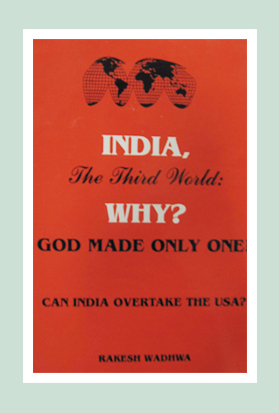The Global Sugar Industry Needs a Free Market System to Flourish

The global sugar industry is expected to grow at a compounded rate of 2.9%, from around $75.6 billion in 2018 to cross $89 billion in 2024, according to a report by ResearchAndMarkets.com. Although there is no dearth of global demand for sweetened foods and beverages, fluctuations in price and supply have hindered the growth of this sector. While the past couple of years saw excess sugar supply in the international markets, the 2019-20 sugar season will be marked by a deficit of around 2-4 million tonnes.
Globally, commodity prices are declining. And, we can lay the blame on the weakening Chinese markets and ongoing trade wars with the US. But this is not the complete story. What has affected this segment more than transitory trade wars is the more permanent impact of widespread foreign subsidization and protectionism reforms. Such interventions will always mess with a market’s supply and demand. The extent of subsidization and protectionism has made the global sugar industry one of the most volatile and distorted markets.
Subsidies Fuelling Production Increases and Price Declines
A 2018 US Department of Agriculture (USDA) stated that Brazil, one of the world’s largest sugar producers, would decrease production by 8 million metric tonnes in 2019. This should have boosted prices, right? But instead prices sank even lower. Global sugar prices currently don’t even cover half the production costs, as per an article in Agri Pulse. The underlying reason is higher global subsidies.
Most large sugar producers like Brazil, India and Thailand as well as countries involved in trade wars like China, Mexico and Japan have import tariffs in place to combat the effect of subsidized world sugar prices. Many even have price control systems to help domestic producers boost their returns.
These subsidies distort global markets and then bring in the evils of import tariffs and price controls.
A Close Relationship Between Capitol Hill and the US Sugar Industry
America doesn’t export sugar, but global policies affect the US sugar industry. Sugar producers in the US are protected by import duties and restrictions. In 2008, the Farm Bill was heavily lobbied, leading to increasing price supports of all sugar producers, while decreasing support for other crops.
Political influence alone has resulted in these supports lasting this long. While sugar production accounted for only 1.9% of the value of crop production in 2015, the PAC donations of these companies surpassed those of all other crop producers combined. At the same time, consumers continued to pay 64-92% above world prices, while giving $3.7 billion as tax to the sugar industry annually. This is the state of a country that many associate with free markets!
Heavily Regulated Regime in Kenya Affecting Sugar Production
In Kenya, the sugar industry employs more than 250,000 people and supports the livelihood of six million. But here it remains a loss-making sector due to government policies that stifle a free market system.
The government is giving all sugarcane-buying power to single millers in a sector, thereby granting them total control on prices and the farmers’ income. This is in gross violation of the Kenyan Competition Act 2010, which was passed to promote effective market competition and preventing unfair trade practises.
There is a proposed Sugar Regulations 2019 in the pipeline, which will create a buyers’ market in the Kenyan sugar sector, and effectively destroy the country’s sugar producing potential. Numerous market entry barriers will come into effect, including complex bureaucratic procedures and expensive licenses. If the country could stick to the Competition Act 2010, with minimal government control, the story would have been much different. Now Kenya is looking at high costs for sugar imports to meet production deficits.
The global sugar market is in desperate need of an overhaul. Lifting trade barriers and eliminating policies that distort free trade could be a way to start. It will benefit both sugar producers and consumers.
 Rakesh Wadhwa. Ever since, I was a school boy, I knew India was on the wrong path. Socialism was just not what we needed to get ahead. Government controlled our travel; government controlled our ability to buy and sell; and government controlled our freedom to move our money. My life has focused on the inherent rights people have. When I was in college, I never understood, what the governments meant by their "socialistic attitude". If people are free to buy, sell and move their capital themselves without any restrictions by state, then the welfare of people is inevitable & hence the countries they live in will become wealthy. The government has no right whatsoever, to point a finger at me or my business. I am not a revolutionary. I just want to light up my cigarette and not get nagged about it. I believe in non-interfering attitude to attain more.
Rakesh Wadhwa. Ever since, I was a school boy, I knew India was on the wrong path. Socialism was just not what we needed to get ahead. Government controlled our travel; government controlled our ability to buy and sell; and government controlled our freedom to move our money. My life has focused on the inherent rights people have. When I was in college, I never understood, what the governments meant by their "socialistic attitude". If people are free to buy, sell and move their capital themselves without any restrictions by state, then the welfare of people is inevitable & hence the countries they live in will become wealthy. The government has no right whatsoever, to point a finger at me or my business. I am not a revolutionary. I just want to light up my cigarette and not get nagged about it. I believe in non-interfering attitude to attain more. 
 The Bastiat Award is a journalism award, given annually by the International Policy Network, London. Bastiat Prize entries are judged on intellectual content, the persuasiveness of the language used and the type of publication in which they appear. Rakesh Wadhwa won the 3rd prize (a cash award of $1,000 and a candlestick), in 2006.
The Bastiat Award is a journalism award, given annually by the International Policy Network, London. Bastiat Prize entries are judged on intellectual content, the persuasiveness of the language used and the type of publication in which they appear. Rakesh Wadhwa won the 3rd prize (a cash award of $1,000 and a candlestick), in 2006.
What the readers are saying…